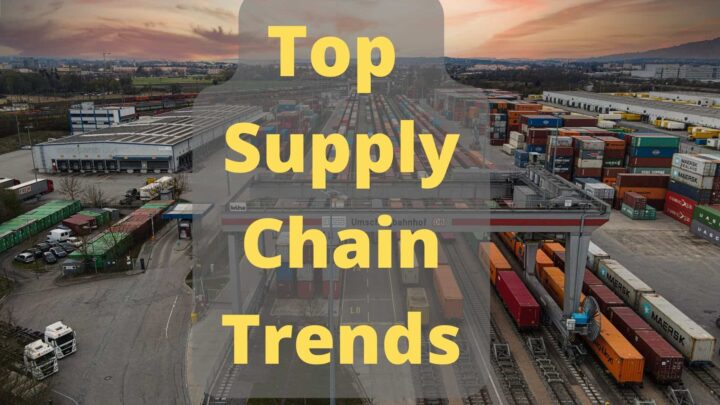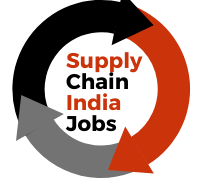
Top 5 Supply Chain Trends in 2023
The supply chain industry has been evolving rapidly over the past few years. With the emergence of new technologies and changing consumer expectations, companies are finding new ways to optimize their supply chain operations. As we look towards 2023, there are several trends that are likely to shape the future of the supply chain industry. In this article, we will explore the top 5 supply chain trends that are expected to dominate in 2023.
1. Increased Adoption of Artificial Intelligence and Machine Learning
Artificial Intelligence (AI) and Machine Learning (ML) are expected to become more prevalent in supply chain operations in 2023. AI can be used to improve forecasting accuracy, optimize inventory levels, and reduce transportation costs. For example, AI algorithms can analyze historical data and identify patterns and trends that can help companies make more accurate demand forecasts. This can help them optimize inventory levels and reduce the risk of stockouts.
ML can also be used to optimize transportation routes and schedules. By analyzing data on transportation costs, delivery times, and other factors, ML algorithms can identify the most efficient routes and schedules for shipments. This can help companies reduce transportation costs and improve delivery times.
2. Increased Adoption of Blockchain Technology
Blockchain technology is expected to gain traction in the supply chain industry in 2023. Blockchain can be used to create a secure and transparent record of transactions and data exchanges between different parties in the supply chain. This can help improve supply chain visibility and reduce the risk of fraud and counterfeiting.
For example, a blockchain-based system can be used to track the movement of goods from the manufacturer to the retailer. Each transaction and data exchange can be recorded on the blockchain, creating an immutable and transparent record of the entire supply chain process. This can help improve supply chain visibility, reduce the risk of fraud, and improve the efficiency of supply chain operations.
3. Increased Focus on Sustainability
Sustainability is becoming an increasingly important consideration in the supply chain industry. Companies are realizing that they have a responsibility to minimize their impact on the environment and to operate in a socially responsible manner. In 2023, we can expect to see an increased focus on sustainability in supply chain operations.
One area where we are likely to see an increased focus on sustainability is in packaging. Companies are exploring new ways to reduce the amount of packaging material they use and to use more sustainable materials, such as biodegradable plastics. This can help reduce waste and minimize the environmental impact of supply chain operations.
Another area where we can expect to see an increased focus on sustainability is transportation. Companies are exploring ways to reduce their carbon footprint by using more fuel-efficient vehicles and by optimizing transportation routes to minimize emissions. This can help reduce the environmental impact of supply chain operations and improve their sustainability.
4. Increased Collaboration Between Supply Chain Partners
Collaboration between different parties in the supply chain is becoming increasingly important. In 2023, we can expect to see increased collaboration between suppliers, manufacturers, distributors, and retailers. By working together more closely, these parties can improve the efficiency and effectiveness of the entire supply chain.
One area where we can expect to see increased collaboration is demand forecasting. By sharing data on sales trends, inventory levels, and other factors, suppliers and retailers can work together to improve demand forecasting accuracy. This can help reduce the risk of stockouts and improve the efficiency of the entire supply chain.
Another area where we can expect to see increased collaboration is transportation. By working together to optimize transportation routes and schedules, suppliers and retailers can reduce transportation costs and improve delivery times. This can help improve the efficiency of the entire supply chain.
5. Increased Use of Autonomous Vehicles and Drones
Autonomous vehicles and drones are expected to play a bigger role in the supply chain industry in 2023. These technologies have the potential to improve efficiency and reduce costs in several areas of supply chain operations.
One area where we can expect to see increased use of autonomous vehicles is transportation. Self-driving trucks and vans can operate around the clock, without the need for breaks or rest stops, allowing for faster and more efficient deliveries. Autonomous vehicles can also reduce the risk of accidents and increase safety on the roads.
Another area where we can expect to see increased use of autonomous technology is warehousing and distribution centres. Autonomous vehicles, such as automated guided vehicles (AGVs), can be used to move goods around warehouses and distribution centres, reducing the need for manual labour and improving efficiency.
Drones are also expected to become more prevalent in the supply chain industry in 2023. Drones can be used for last-mile delivery, delivering goods directly to customers’ homes or businesses. This can be particularly useful in urban areas where traffic congestion can slow down deliveries.
Drones can also be used for inventory management. By flying over warehouses and distribution centres, drones can quickly and accurately scan inventory levels and provide real-time data on stock levels. This can help companies optimize their inventory levels and reduce the risk of stockouts.
Conclusion
In conclusion, the supply chain industry is rapidly evolving, and companies are embracing new technologies and practices to improve efficiency, reduce costs, and enhance sustainability. In 2023, we can expect to see increased adoption of artificial intelligence and machine learning, blockchain technology, autonomous vehicles and drones. We can also expect to see an increased focus on sustainability and collaboration between different parties in the supply chain. Companies that embrace these trends and adapt their operations accordingly are likely to gain a competitive advantage in the years to come.
